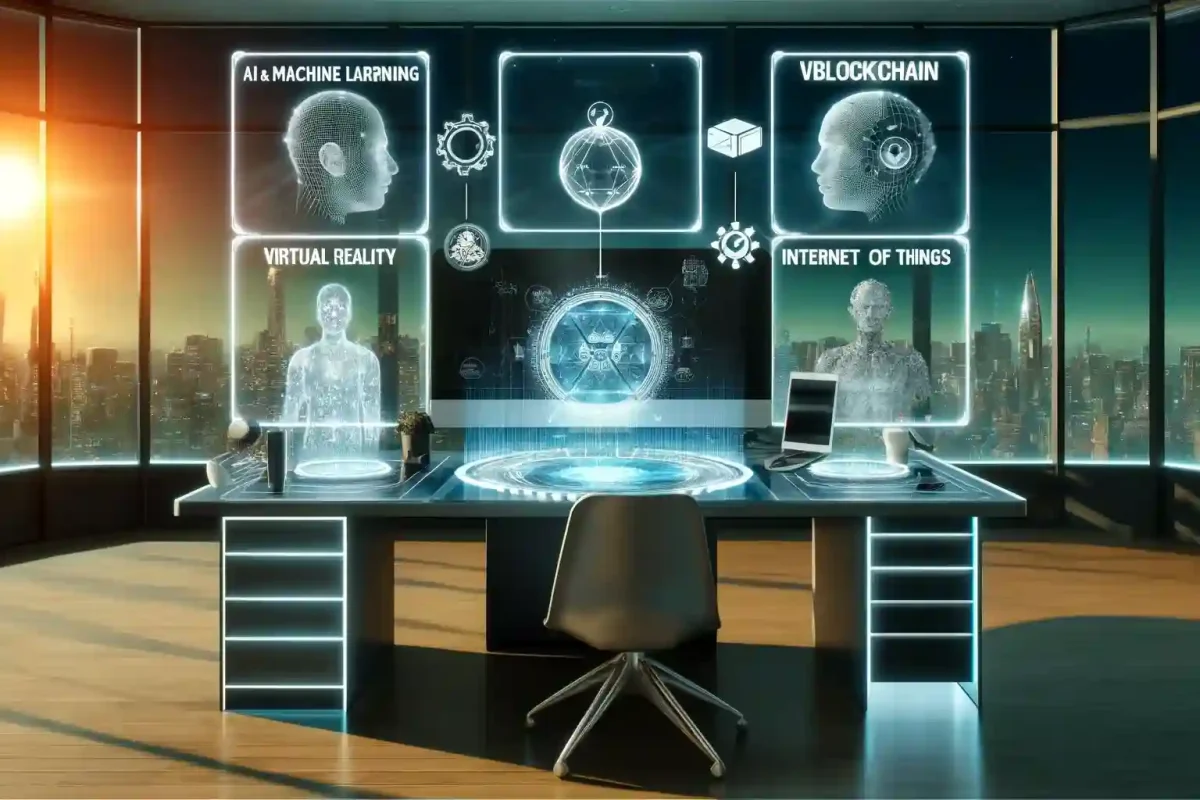The Landscape of Emerging Technologies in 2025
If you are pursuing a career in technology, there are various roles you can choose from. If you want to work in any job championing innovation, you will find this article helpful.
It’s 2025, and emerging technology is at the forefront of innovation. The future is unfolding in the form of emerging technologies and computers. It is staggering how cutting-edge innovations and various tech trends in every space and facet of society are evolving quickly.
Today, autonomous vehicles, artificial intelligence, and robotics are increasingly common. AI and robots now carry out more of an individual’s or a company’s daily jobs. These innovations drive transformation and provide immersive digital experiences.
Future (and present) careers are built around these emerging technologies.
Fields like AI, machine learning, spatial computing, and renewable energy are proliferating. As a result, there’s a lot of interest in understanding the skills required to enter these fields and the potential career pathways they offer.
This article explores several emerging technologies that are set to revolutionize industries worldwide and the abundant opportunities they present.
Get ready to chart your career pathway through the (endless) possibilities today.

What are Emerging Technologies?
Emerging technologies refer to innovative advancements in various fields, often with the potential to significantly impact society, industries, and everyday life. They are innovations that continuously improve upon the development of an existing technology or technologies, still in the early stages.
These technologies span a wide range of areas, including:
Educational Technology: These are innovations in educational tools and methods to enhance learning experiences. Educational technology refers to using computer hardware, software, technological tools, educational theory and practice, and inventions to accelerate learning processes.
Information Technology is the professional category that includes everything related to computing and communications. It involves ongoing developments in IT infrastructure, software, and networking.
Nanotechnology: The manipulation of materials and devices at the near-atomic scale or nanoscale to produce new structures and materials. It has led to novel medical, electronics, and materials science applications. Nanotechnology holds much promise in medicine, energy, manufacturing, and consumer products.
Biotechnology: A multidisciplinary field that combines biology (natural science) and engineering to develop organisms, methods, cells, and products to improve health products and services. Biotech refers to the advancements in genetic engineering, biopharmaceuticals, and bioinformatics for healthcare and agriculture.
Robotics: A branch of engineering and computer science, and an interdisciplinary field of practice involving the conception, construction, design, manufacture, operation, and use of robots. It is the progress in automation and robotics, with manufacturing, healthcare, and autonomous vehicles applications.
Emerging technologies are still largely unrealized in their development and practical applications. Generally, these technologies are new, but (as mentioned earlier) they also include older technologies finding new applications. Ergo, they are the continuing development of an existing technology with a slightly different meaning.
These emerging technology trends can optimize and redefine processes and procedures, and some might argue that they can change the status quo.
The application of emerging technologies offers substantial benefits for various industries, such as medicine and communication. They increase efficiency, improve healthcare, enhance communication, and provide new business opportunities.
Therefore, staying informed about emerging technologies is crucial for businesses and individuals alike. It enables them to adapt, harness the potential benefits of these innovations, and stay ahead of the game.
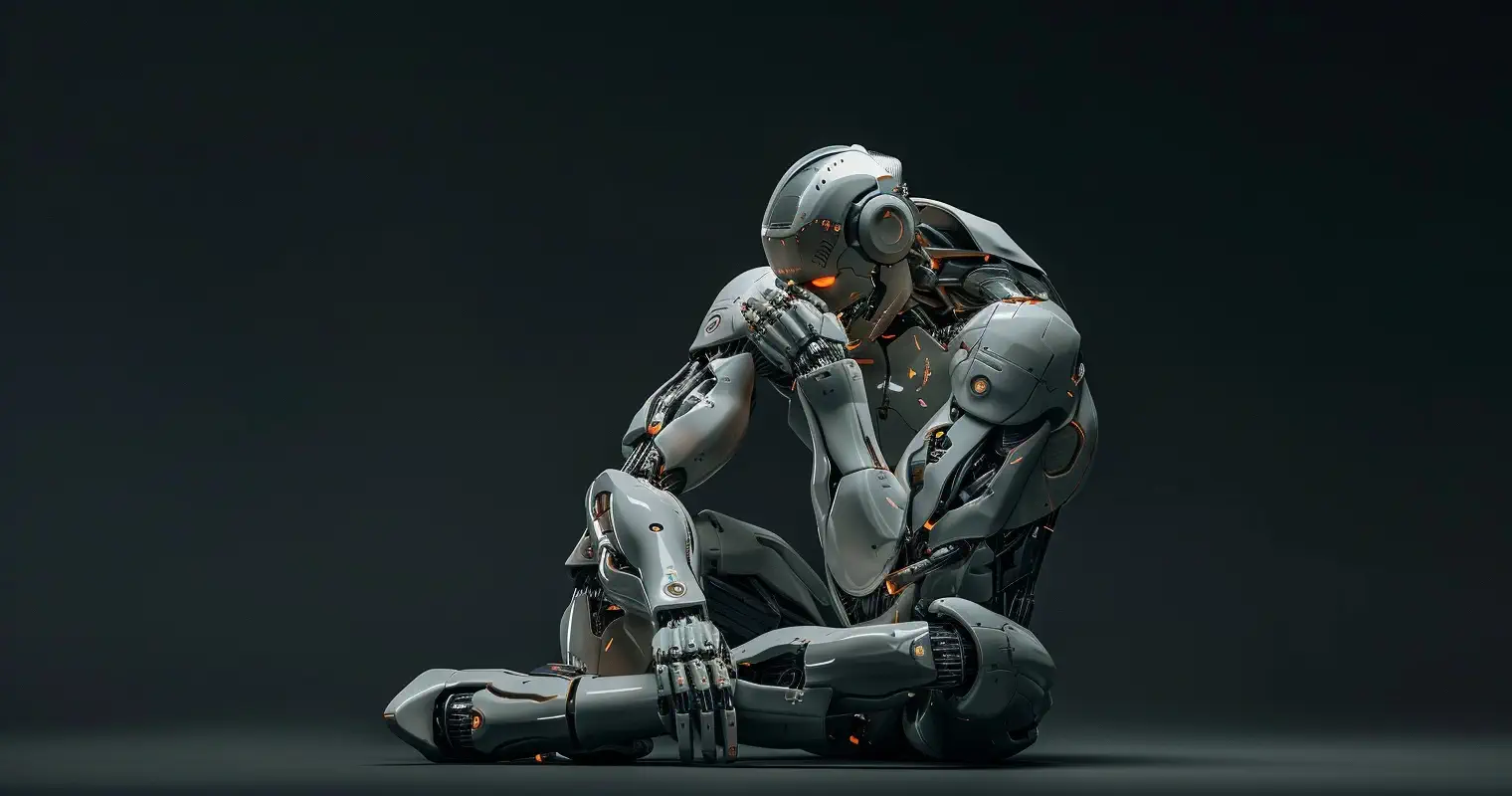
Emerging Technology Trends in 2025
Although these technologies are in preliminary stages and have different maturity levels, they are all essential for businesses and organizations to make informed decisions. Most business processes almost certainly use (at least) a few or all of these new technologies currently.
As a business leader, you should be looking to invest in these emerging technologies so as not to be limited. Amerikano outlines 20 emerging technologies that will change our world in this video.
The list below gives a better understanding of technology trends this year.
Artificial Intelligence
Hollywood and science fiction have done a great job of familiarizing us with artificial intelligence and its hyper-realism. But what is artificial intelligence outside the world of Hollywood?
For starters, artificial intelligence is a broad branch of computer science. It is the science of creating computers and robots with the ability and capacity to perform human-like tasks.
Imagine a machine that could organize your desk just as you like it or serve you a customized cup of coffee. Although the functions of AI aren’t as obvious as in these (aforementioned) examples, they are built to do things commonly associated with intelligent beings.
Hence the term ‘artificial intelligence.’
AI systems are built using complex algorithms and mathematical functions. Therefore, they have the potential to automate tasks, streamline processes, create content, solve challenges, and provide personalized experiences in a wide range of domains.
In 2025, AI reached a tipping point. AI isn’t exclusive to data scientists, software engineers, and tech geniuses anymore. It is so powerful yet easy to use that even traditional knowledge workers (and users) can use it by inputting simple human text-based prompts.
The development of this cutting-edge technology has also significantly impacted other technologies. AI can be found in smartphones, cars, social media feeds, video games, banking surveillance, and many other aspects of our daily lives.
For example, Siri can talk with you or tell you when it will rain. Other types of AI, like ChatGPT, Gemini, Microsoft’s Copilot, and so on, are being used (responsibly) on a large scale across businesses and organizations.
You can see AI technology in action from creating content to productivity improvement, virtual assistants, data processing, and cybersecurity. As AI is leading the way in efficiency, it is bound to scale up quickly and transform how jobs are done.
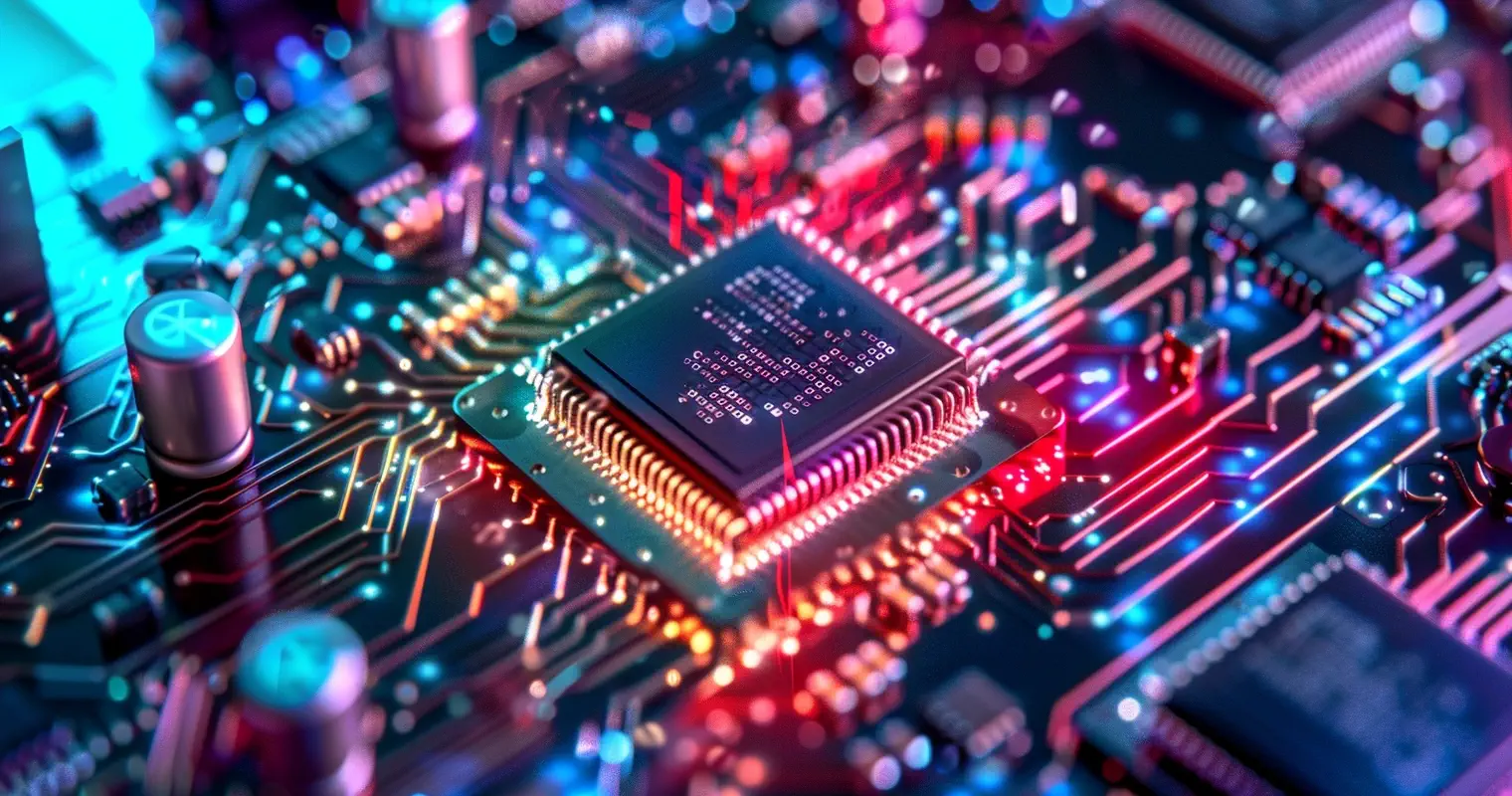
Quantum Computing
Quantum computing is a new technology trend that is greatly inspired by quantum physics, the study of the behavior of atoms and particles. It is a multidisciplinary field with roots in physics, computer science, and mathematics.
So, what is quantum computing?
Quantum computing is an aspect of computer science that uses the principles of quantum theory and quantum mechanics to solve complex problems faster (and better) than classical computers. It uses specialized technology, including computer hardware research, algorithms, and application development.
Quantum computers are advanced machines that use qubits or quantum bits, which are represented as a simultaneous superposition of one and zero until they can be measured. This is unlike classical computers, which use bits representing either one or zero. Therefore, quantum computers process data very differently from classical computers.
They are advanced machines that study and control the behavior (specifically superposition and entanglement) of atoms and particles in a completely different way from regular or supercomputers.
Quantum computing is bound to revolutionize classical computing radically. These computers are not exactly the next generation, but upgraded and powerful versions of classical computers.
An ideal quantum computer should be able to break the encryption standards we use today by finding prime factors of a large integer in just minutes. Unfortunately, our quantum hardware is not quite powerful enough to do that just yet.
However, technology development is advancing faster than ever. This emerging technology can conduct much more complex operations faster than classical computing. It can optimize other applications to produce better and more reliable data.
Quantum computing is making technology and computer-based applications exceedingly relevant to various industries. It can potentially revolutionize multiple fields, from cryptography to drug discovery.
With its increasing compatibility (and reliability) with classical computing, this trending technology offers many benefits.

Machine Vision
Machine Vision is a (relatively) new technology that has become common in the digital world. But what is machine vision, and how can businesses use this technology to gain a competitive advantage?
Machine vision is precisely what it sounds like—a machine with eyes that can see. Put another way, machine vision is the ability of a machine or computer to see. It employs video cameras, analog-to-digital conversion, hardware and software algorithms, integrated systems, and digital signal processing to automate visual tasks.
The process begins with a sensor, such as a camera, that captures the digital input. A software algorithm analyzes and categorizes the input on a hardware platform. The MV system results classify what’s been “seen” or initiate an action.
Businesses use these systems to improve accuracy, throughput, production, and quality. Today’s common uses of MV systems include imaging-based automatic inspection (and analysis), defect detection, process control, identifying, measuring, sorting, tracking products, and robot guidance.
Blockchain technology
Blockchain is among the many advanced technologies that are rapidly revolutionizing our world. Imagine making transactions without cash and without going through third-party applications or banks.
Blockchain is an advanced database system or mechanism that allows users to exchange data transparently within a business network. It is a (distributed) ledger that distributes, records, and stores information or transactions (between people) in a set of blocks linked together in a chain. Hence, ‘blockchain.’
Blockchain uses digital cryptocurrencies that no one can manipulate to provide a safe and secure mode of transactions. It distributes trades as a digital ledger across the entire network of computers participating in the blockchain, making it more secure and impossible to change, hack, or cheat the system.
In recent years, blockchain has seamlessly integrated many business systems and processes. Its efficiency in providing trusted transactions and interactions helps organizations and businesses be flexible, efficient, and trustworthy with stakeholders and customers.
This revolutionary and trending technology will change how transactions work radically in the near future. Its transparent, cost-effective, and secure ways of monitoring, storing, and transferring assets (and information) will contribute to an economy and enable revenue opportunities and digital business models. A good example of blockchain in action is global payments and asset tokenization.
One day, everything might be tokenized and connected by a blockchain.
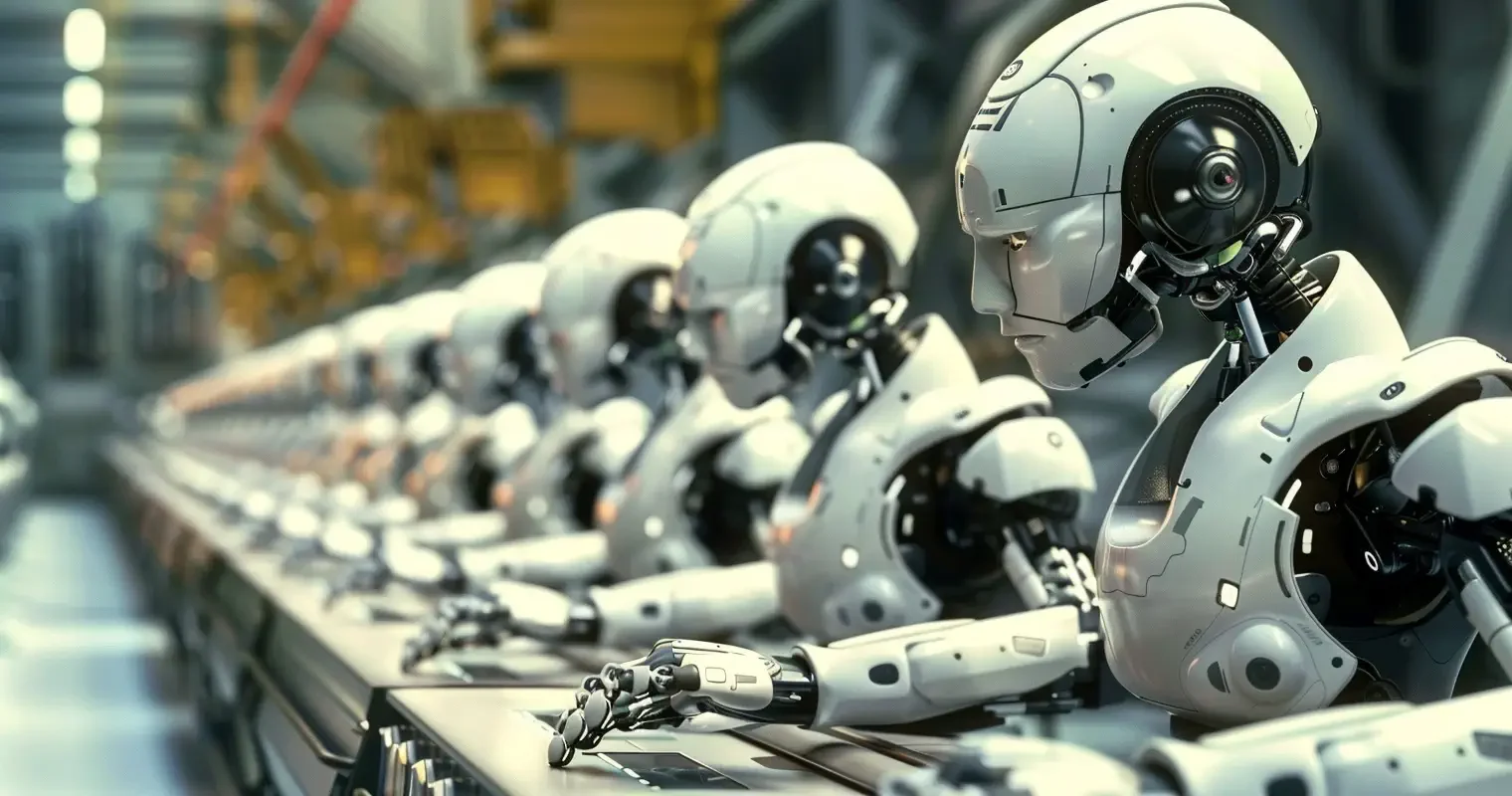
Advanced Robotics
Before we get into advanced robotics, let’s take a sneak peek at it.
Robotics is the field where science, engineering, and technology intersect to produce machines called robots. These robots replicate or substitute for human actions and are programmed to assist humans or mimic human actions.
Robots were initially developed to handle monotonous tasks, such as carrying luggage at warehouses, building cars on an assembly line, or arranging packages at a store. In recent years, their services have expanded well beyond their initial design.
Nowadays, you will find robots cleaning homes, processing goods, fighting fires, and attending live events.
They can even interact with people (on a personal level) and can act in a complex or dynamic environment. As technology improves, so does the scope of what is considered robotics.
So, what is advanced robotics?
Advanced robotics is an emerging technology that features a combination of powerful hardware and software (and sensitization), making robots capable of thinking intelligently as opposed to traditional machines.
Advanced robotics involves integrating artificial intelligence into robots to perform complex tasks, interact autonomously with their environment, and respond to the complexities of the real world.
Its sophisticated programming uses innovative (or enhanced) sensor technology (like light, ultrasonic, and touch) to help robots perceive better. Advanced robotics enables robots to leverage deep learning and neural networks to process or analyze large amounts of data and make real-time decisions.
Advanced robotics is a technology trend that incorporates modern human robots into human and business processes for a seamless workflow. This technology trend comes into play regarding reliability, enhancing productivity, revolutionizing labor-intensive jobs, creating workplace safety, and providing labor support.
Virtual Reality
Virtual reality (VR) is a new technological innovation that has become increasingly popular. It is a three-dimensional environment generated by a computer with objects and scenes that seem very real to the user. VR immerses you in an artificial 3D simulated world that looks (and feels) real. It removes the limitations of the real world to allow you to explore and interact with the virtual surroundings.
You can perceive this virtual space through a VR headset or helmet, go wherever you want, and find what you’re interested in. These devices are entirely untethered from computers and completely block the real world. When using VR devices, our brains are tricked into believing that what we see and hear is real.
The virtual setting is 360 degrees for a better sense of realism. This means you can look around to see the place around you. For example, when you step, the scenery will move like walking through a real place.
Also, sounds are part of the virtual experience. If you are in a VR chat room, for example, you can hear someone walking up behind you. If the person is coming from your right, you’ll listen to it on your right.
Virtual reality is increasingly used for commercial applications like gaming, entertainment, and education. VR devices play an interesting role in training the police and the military to navigate complex environments that can’t be easily created in the real world.
The VR system can create a digital environment where businesses can host meetings and events. It could transform customer services, stakeholder confidence, employee experiences/ interactions, and upskill workforce collaboration.
The metaverse is a great example of VR’s power. With this technology trend, people can access different tools, data, and a whole new level of connectivity.
Through the integration of AI and eye and facial tracking, VR may soon blur the (thin) line between the virtual and physical worlds in nearly every industry.

Internet of Things (IoT)
Among the new technologies, the Internet of Things (IoT) continues to gain significant momentum in modern times.
The Internet of Things is the network of interconnected physical devices, vehicles, and other appliances with sensors, software, processing ability, and network connectivity. It can also connect with different technologies that collect and exchange data with other devices and systems across the Internet.
A collective network of connected devices and technology, such as wearables and sensors, expedites communication between devices and the cloud over a wireless network (without human intervention) to provide more optimal results.
IoT can be found in thermostats, smoke detectors, AC, water heaters, doorbells, security alarms, and more.
In retrospect, access to the Internet was limited to devices like tablets, smartphones, or desktops. However, in our world today, nearly every appliance (in digital spaces) can connect to the IoT and be monitored remotely.
In the coming years, IoT can be the bedrock technology for such futuristic scenes as robot-driven agriculture, intelligent energy, self-driving highway systems, and smart cities. So, it’s no surprise that IoT is the most prolific emerging technology in terms of market size.
In the business world, this technology will continue recent trends and help businesses innovate processes and improve operations, taking them to the next level. The expansion of IoT devices is rapid in almost every industry. Some might argue that it is as essential to business as electricity.

Career Pathways in Emerging Technologies
As emerging technologies continue to develop, there are many exciting and new career opportunities that you can explore. Adopting emerging technology trends has led to a growing demand for skilled professionals to drive innovation.
So if you’re interested in a tech career and looking to chart a career in these futuristic sectors, there are different areas and diverse pathways you can pursue. Career pathways in these sectors tend to have steep learning curves, but you can still build your expertise and experience.
Exploring the positions and professional routes available in any emerging technology trend will help you find a suitable career.
Below are the top roles in emerging tech. You can be:
A Software Engineer
Software engineers develop, test, and update software applications and computer programs. They employ the principles (and resources) of engineering, mathematics, and computer science to create software programs and mobile applications.
Software engineers create software by writing code. They use Python or Java programming languages and combine tiny building blocks to develop more extensive software.
Software engineers primarily determine software specifications, document systems or applications for operating instructions, and upgrade or add fixes to existing applications or software.
To be a software engineer, you need a bachelor’s degree in computer programming, software development, mathematics, or a similar field.
A Web Developer
Web developers create (and maintain) websites and mobile applications using coding languages. They can be front-end, back-end, or both (full-stack developers).
Front-end developers create the visuals or front-facing interfaces that users see, while back-end developers create the behind-the-scenes mechanics, such as the database, server, and application.
Other duties of a web developer include:
Developing the technicalities, speed, and appearance of a site
Collaboration with designers
Analyzing user feedback to apply updates and fix errors
Implementing testing tools to monitor website performance
To work as a web developer, you must have a bachelor’s degree in computer science or a related field and expertise in several coding languages.

An Artificial Intelligence Engineer
Artificial intelligence (AI) engineers combine AI and machine learning techniques to create complex systems with human-like intelligence. Their primary duty involves designing, manufacturing processes, developing, programming, and training complex algorithm networks that constitute AI, such as generative AI like ChatGPT, Gemini, etc.
AI engineers work on the plans mapped out by AI specialists to develop systems and tools with the ability (and power) to operate like humans, e.g., Robotic process automation.
AI engineering requires knowledge and expertise in programming, software development, data science, and data engineering.
A Cybersecurity Specialist
Cybersecurity specialists protect or maintain the safety of computer network systems, software, sensitive data, and data security from unauthorized access, data breaches, and malware.
These professionals develop technological security and defenses for IT equipment. They provide better protection by developing, testing, and applying various security measures. Cybersecurity specialists recommend threat intervention and prevention to keep sensitive information secure.
To work as a cybersecurity specialist, you need a bachelor’s degree in cybersecurity, IT, or computer science. Additionally, having relevant work experience in cybersecurity risk assessments and creating and monitoring cybersecurity policies will strengthen your chances of getting hired by most companies.
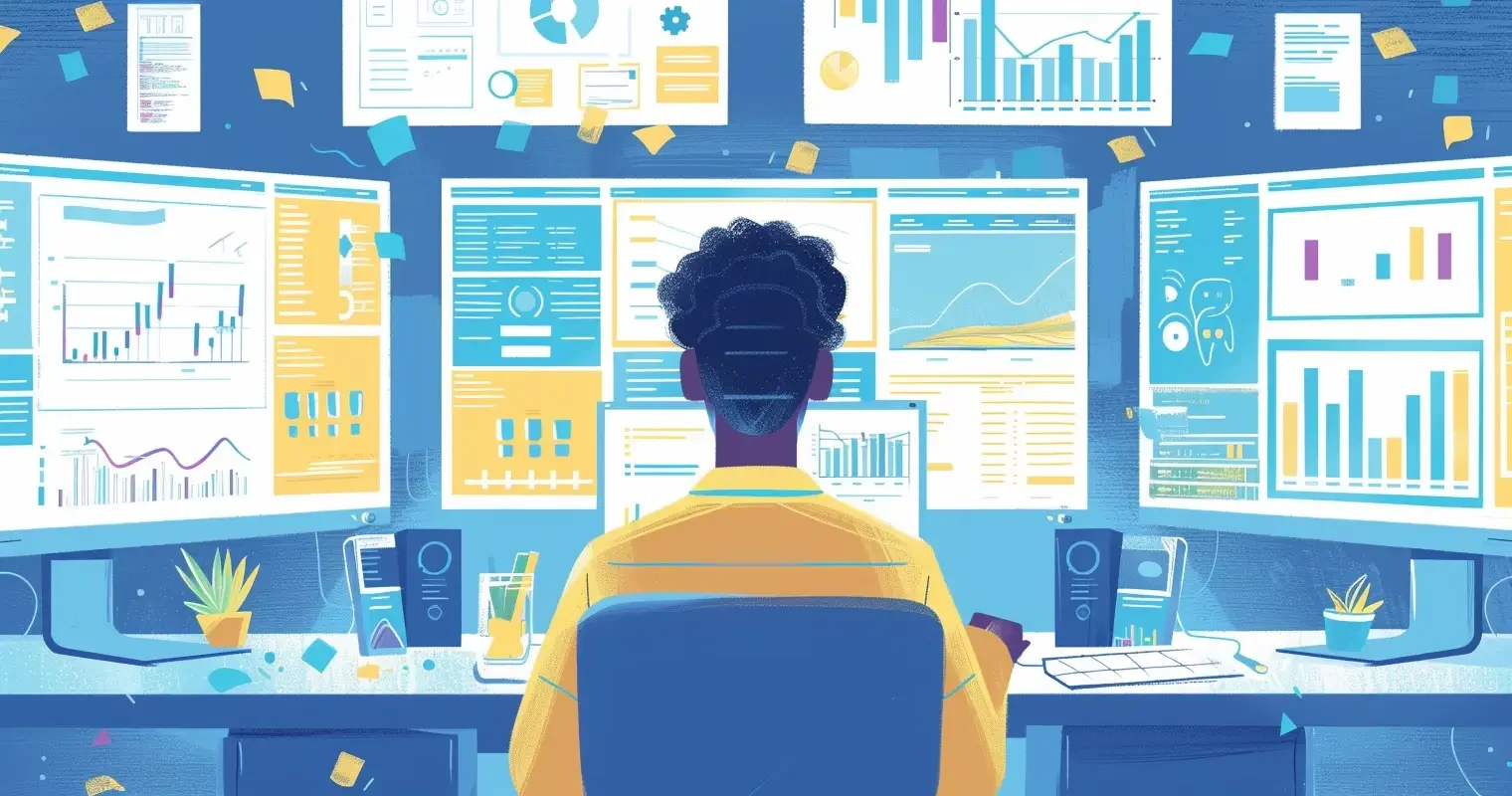
A Data Scientist
Many organizations rely on data to optimize operations, predict, and solve problems. Data scientists collect and compile sizable raw data sets and convert them into easy-to-understand information and facts.
They extract data from either a company database or through cloud computing and identify the most helpful information (or data). Then, they use their analytic skills to interpret the data in a way that makes sense. Through this, data scientists can help organizations make informed decisions for efficient outcomes.
Some of their many functions involve programming, data processing, and using business logic and statistics to make comprehensive data conclusions, make predictions or projections, and improve business efficiencies.
Due to the nature of their work, data scientists work in any industry or sector, such as sales or Robotic process automation creation.
A Video Game Designer/Developer
A video game designer/developer develops video games using programming, coding languages, and game creation platforms. These specialists also develop the games we play on our mobile phones and laptops.
Their duties involve creating every aspect of a video game, including the storyline, characters, rules, settings, and props. Their tasks range from visual appearance and gameplay quality to debugging.
They test the early versions of a game and pitch new ideas for (new) games to their management or teams.
To work as a video game designer/developer, you need a bachelor’s degree in software engineering, computer engineering, game design, computer science, or a related field.
However, employers will be more interested in your talent, creativity, and ability to work with a team.

A Blockchain Engineer
A Blockchain engineer is highly skilled in building decentralized applications like blockchain. Blockchain engineers have an in-depth knowledge of blockchain operations and work out contracts for data consulting firms or crypto lending platforms.
A blockchain engineer builds upon existing frameworks to improve efficiency or create new ones when necessary.
To be a blockchain engineer, you need a bachelor’s degree in computer science, computer engineering, information technology, or a related field. You must also be proficient in programming languages like Java, Solidity, C++, and Golang.
A Machine Learning Engineer
A machine learning engineer researches, designs, and builds AI systems or self-running software that automates predictive models for machine learning.
Let’s put that in English.
Machine learning engineers use extensive data to create complex algorithms for programming machines, like self-driving cars, and economic and weather forecasting. Image recognition, a customized newsfeed, or voice assistants are the others.
Because machine learning engineers analyze and organize considerable data resources, they are very valuable to the data science team. They are responsible for the manufacturing and generating AI and other technology that needs little human intervention to be efficiently optimized.
They also test and optimize ML systems and algorithms, as well as maintain and improve upon existing AI systems.
To be a machine learning engineer, you need a bachelor’s degree in computer science or a related field. To stand out more during your job search, you need hands-on experience in computer science fundamentals like data science, data structures, software development, algorithms, and computer architecture.
A Robotics Engineer
Robotics engineers work with robotics, prototypes, machines, and integrated software. They design these technological components and robotic systems to perform human and nonhuman tasks.
As a robotics engineer, your duties include designing, building, analyzing, reevaluating, configuring, testing, maintaining, and repairing robots. You will also develop and implement new applications for existing robot systems and technologies.
To be a robotics engineer, you need a bachelor’s degree in robotics and engineering, such as mechanical, electrical, or industrial engineering.
A Renewable Energy Engineer
Renewable energy engineers develop solutions to maintain the quality of life and create more excellent sustainability practices to help the environment recover. They research and design new ways of collecting and using (green) energy. Think of them as innovators in renewable energy.
These engineers use engineering principles, mathematics, and research to design new energy usage and generation methods that won’t harm the planet. They use solar, wind, and biotechnologies to build sustainable and renewable energy conversion sources.
To become a renewable energy engineer, you need a bachelor’s (or master’s) degree in engineering or related fields like electrical, mechanical, or chemical engineering.
The others are Earth science, renewable or sustainable energy, and environmental science. You must also gain experience through entry-level positions or internships.
A Cloud Engineer/Architect
Cloud engineers/architects research, plan, design, create, monitor, implement, and manage the technical and security infrastructure that cloud-based systems need.
They solve or troubleshoot issues with cloud-based processes by implementing cloud solutions.
Cloud engineers/architects analyze companies’ technical and security infrastructures and move specific functions and processes to a cloud system.
They also work with technical teams to plan and design cloud-based applications, software, and web services.
To fill this role, you need a bachelor’s degree in cloud computing, software engineering, information technology, computer science, or a relevant field.
You also need experience working with Google Cloud Platform, Azure, AWS, and other emerging cloud technologies, such as DevSecOps, APIs, and serverless.

Problems and moral questions that come with new tech trends
Emerging technology trends have spurred ground-breaking innovations and changed how we work and operate. It is transforming industries and digital spaces as we know them.
The way we access and use information is rapidly evolving. Emerging technologies have given companies (and individuals) competitive strategy, power, enhanced productivity, and convenience.
However, while these technologies have potential use cases, their production and development should be limited where ethics are concerned. When put into proper perspective, these techs may pose an existential threat to our civilization.
Their potential consequences and justifiable privileges are all connected, from data security issues and misinformation to their impact on several jobs across the globe.
Ethics are essential in every business, and making decisions based on ethical practices will increase security in our digital world.
Therefore, the government and various sectors should acknowledge the ethical implications of these technologies and ensure that they are used ethically. Below are some potential ethical consequences of technology;
Misinformation
The Internet allows us to access information and news in real time. Unfortunately, there is a high chance of encountering fake news due to misinterpretation or a lack of fact-checking.
So, more and more inaccurate or distorted information reaches us every minute of every day.
One technology trend perpetrating this atrocity is “deep fakes.” Deep fake technology manipulates digital images to make a video look accurate and objective. This raises many concerns about personal information and identity misuse, identity theft, and privacy invasion.
Misuse of personal data
Various internet sites, such as social media, collect and store vast amounts of personal data. Companies extract such data to personalize user experiences and understand users’ preferences.
However, the rapid increase in the gathering of personal data raises concerns about privacy, such as cyberattacks.
We have grown so dependent on digital infrastructures for daily living that the possibility of personal information being shared with third-party partners is high.
Misuse of personal information is now a primary ethical concern because preserving the confidentiality of private information is difficult. Nowadays, privacy is considered a scarce privilege.
The Risk of and Liability for Autonomous AI & Technology Systems
Innovations like self-driving cars or unmanned delivery drones are excellent indicators of the use cases of AI and other technology systems.
While this holds promise for a remarkable (and beautiful) future, allowing programmed technology to act solely without human intervention raises ethical concerns.
If these technologies and AI systems become too autonomous, there is a high propensity for them to make decisions that compromise and harm human values. If they are not limited or guided by us humans, it can lead to uncontrollable consequences in the years ahead.
Therefore, AI and other technology systems must be guided by frameworks and some level of human intervention for ethical purposes.

The Endless Possibilities in Emerging Techs:
(Get Ready To Chart Your Path)
Emerging technologies offer many opportunities. Because we do not know what to expect, it may initially seem intimidating to know what we want or ought to do.
However, if you are ready to shape the future, know that you’re on the right track and in the right place.
The emerging technologies and their diverse career pathways mentioned in this article will give you valuable insight into the amazing breakthroughs you can attain. From harnessing the sun’s rays to manipulating matter atom by atom, you will be amazed by how much potential you have.
So, buckle your shoes and get ready to chart your career path boldly. Join the movement toward a brighter and safer future.
Remember to create your job application documents at CVJury.
Cheers!
